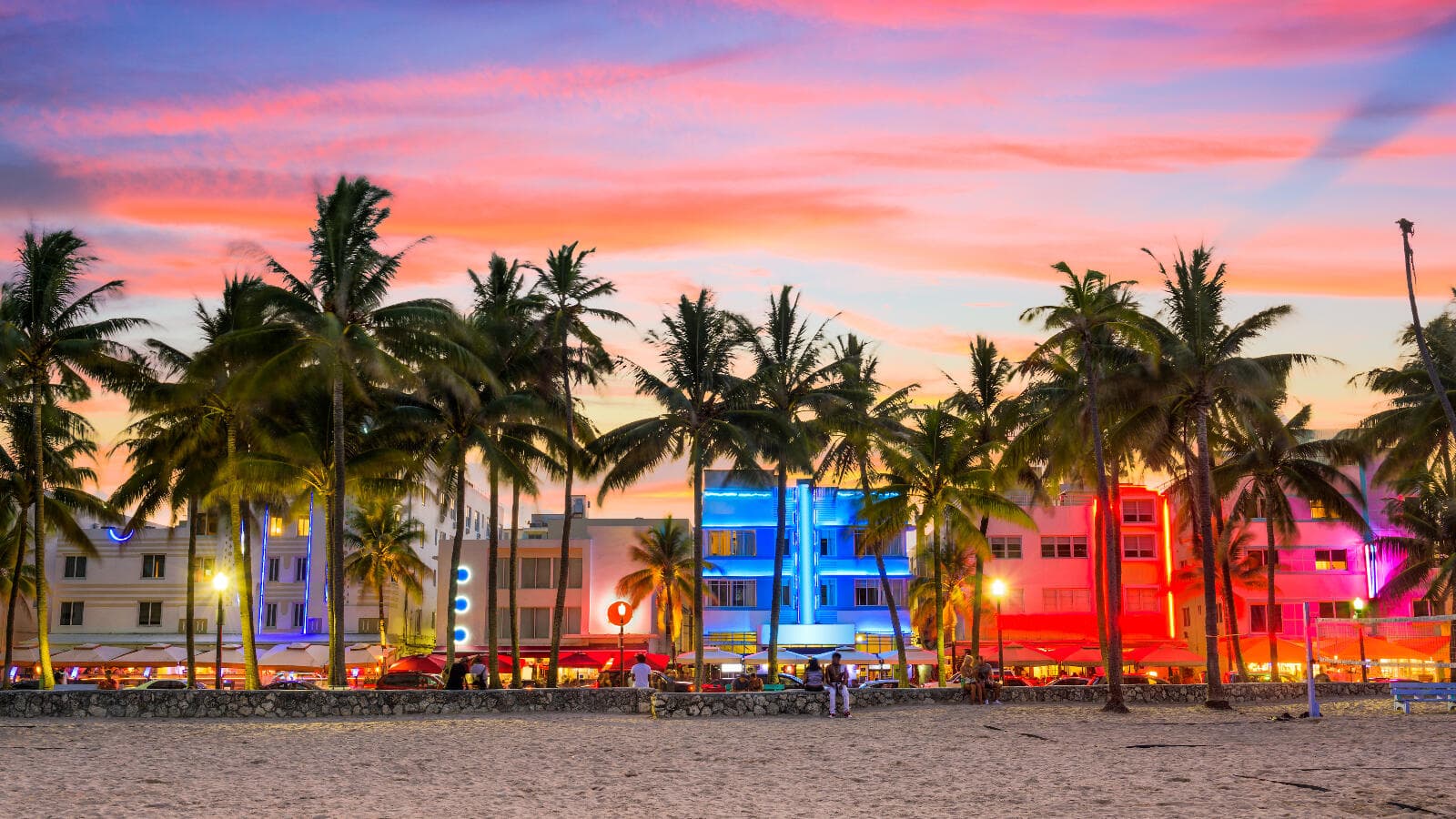Web3 Watch: Miami Art Week, but Make It Crypto
Art Basel featured an exhibit by Tezos for visitors to mint their own generative art NFTs

Sean Pavone/Shutterstock.com
Miami Art Week and its cornerstone art fair Art Basel have been gathering art lovers and collectors to Miami for two decades, but 2022 is the second year that the tech and crypto community took over the city during the first week of December.
 Blue-chip NFT project Doodles built a nine-hole mini-putt course | Photo by Ornella Hernandez
Blue-chip NFT project Doodles built a nine-hole mini-putt course | Photo by Ornella HernandezBlue-chip NFT project Doodles built a nine-hole mini-putt course and Yuga Labs donated CryptoPunk #305 to the Institute of Contemporary Art Miami to display in the museum through the end of the year.
Here is a look at some of the top events that occurred last week in Miami, with a focus on those connected to Web3 and the growth of digital art inside the art sector.
The argument for large conferences
Programming was anchored by various crypto conferences such as DCENTRAL and the WEB3 Summit during the day and brand sponsored social events in the evening.
However, overall attendance at speaker panels and fireside chats that were simultaneously scheduled across town meant smaller audiences with lots of empty seats. People can only make it to so many events in one given day amid Miami traffic.
This begs the question — what is the value of large scale crypto conferences, if any, at a time when the crypto industry is dealing with fallout after fallout?
Blockworks spoke with Jason Hartgrave, head of marketing at DCentral Conferences, on site. He admitted that DCentral had a much larger footprint last year — approximately 5,000 showed up — compared to this year’s 3,000 attendees.
This year was particularly “pivotal,” Hartgrave said because more people have already learned about NFTs and blockchain technology, so there are more artists and builders. Now it’s about “separating the wheat from the chaff — who is still really building?”
 Miami Art Week event featuring NFTs | Photo by Ornella Hernandez
Miami Art Week event featuring NFTs | Photo by Ornella HernandezAccording to Hartgrave, conferences can act as “melting pots of crypto culture” and have the potential to create an “industry mastermind effect” by getting hardcore builders and business leaders together – whether to make connections or form strategic partnerships.
He also admitted that “a lot of budgets are very tight right now,” so “if you see somebody in a sponsor booth, it’s because they really believe in the long-term value of the community.”
“You want to see who is here when the chips are down,” Hartgrave added.
While there was no lack of big events and DJ parties, John Kraski, the director of strategic partnerships at LandVault, believes that smaller, targeted events by major brands were the winners of Basel.
“This was where most of the big deals were getting done,” Kraski said. Alo Yoga, the athleisure wear brand, for example, had an installation where executives from the biggest Web2 and Web3 were getting deals done over facials, massages and B12 shots.
He added that he felt a more “professional and polished” tone to Web3 and NFT related events compared to Art Week last year.
“The so-called degen superheroes of 2021 who built their fame and fortune on selling and buying overpriced NFT cartoons were not as prevalent,” Kraski said.
Generative art takes center stage
Art Basel fair visitors at the Miami Beach Convention Center not only got their fill of contemporary art but they also could learn about generative art — digital works made by algorithms that randomly generate content.
Proof-of-stake blockchain Tezos held an NFT exhibit titled “Performance in Code: Deciphering Value in Generative Art Exhibition” at Art Basel. It featured collections by three different artists, and attendees could mint a generative art NTF in real time from one of those collections via the Tezos-backed fxhash NFT marketplace and Kukai wallet.
Tezos, which also had a booth at Art Basel in 2021, went from having to define an NFT to visitors last year to introducing generative art as the “art form of the era,” according to Baptiste Crespy, founder of fxhash.
“All the big art movements are tied to the technology at the time. The current era is embodied by humans interacting with computers,” Crespy said.
The purpose of the exhibit is to make tools, such as crypto wallets, available to everyone and to act as a pipeline between non-blockchain native audiences,” he added.
Generative art NFTs may not necessarily have utility or a roadmap for its holders, and rarity is subjective to a particular community.
“We’re here for the art,” Paul Schmidt, a member of the core fxhash team, said.
While generative art has been around since the fifties, not many people may be familiar with it because “the only way you learn about it is in an old science textbook where it’s completely static and you don’t actually engage with the technology,” according to Valerie Whitacre, the head of art at TriliTech, the research and development arm of Tezos.
Whitacre believes that the blockchain can be used by artists not just for making new work, but to preserve or archive artwork over time.
“There’s a dialogue between the artists and the collector, and we used the live mint as an anchor of the exhibit so everyone can walk away with a piece,” she added.
Support for NFT artists
Miami provided a unique backdrop to the Art Week festivities — from pastel-colored art deco venues lining the shores of Miami Beach to humidity and unannounced rain showers to crowds decked in eye-catching, vibrantly colored fashion looks.
The city also acted as a setting for the crypto and Web3 community “to just come together and celebrate the best of what we’re building,” Maya Draisin, chief brand officer at TIME magazine, told Blockworks.
“I think it was really needed for the community at this moment in time,” Draisin said, referring to a post-FTX world that continues to deal with the consequences.
On the same day that Sam Bankman-Fried was interviewed at The New York Times DealBook Summit, TIME hosted a dinner for its TIMEPieces NFT artist community.
“When there’s so much going on, we just want real connection and to bring people together to build, grow, highlight and support them,” Draisin added.
TIMEPieces also set up an exhibit at a local gallery to physically showcase the work of some of the artists they support.
Earlier this year, TIMEPieces partnered with the city of Miami, Mastercard and Salesforce to create a collection of 5,000 NFTs designed by 56 local artists.
Draisin will succeed Keith Grossman as the president of TIME magazine effective Dec. 31. Grossman announced last week that he will move to crypto payment provider MoonPay to lead its enterprise business.
While the crypto market may be down, Miami Art Week served to demonstrate the staying power of digital art, NFTs and the blockchain community.
Get the news in your inbox. Explore Blockworks newsletters:
- The Breakdown: Decoding crypto and the markets. Daily.
- 0xResearch: Alpha in your inbox. Think like an analyst.






